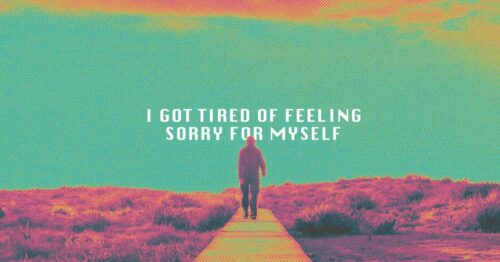On body neutrality—shifting perspectives from body hatred to respect and realism
Step aside, body positivity. Body neutrality is the new big thing. After its initial success on social media, the concept of body positivity has become infiltrated by ideally shaped influencers nitpicking at barely-there flaws.
Now that eating disorders are, again, on the rise, the idea of loudly and voraciously celebrating all body types has become controversial, to say the least. Inadvertently, it’s paved the way for body neutrality, a quiet and purposeful movement aiming to simply normalize the idea of different body types.
However, not everyone has received the memo. If you’re tired of blissfully embracing your flaws and just want to feel normal, being in-the-know about body neutrality is a good first step.
RELATED: Janina Vela on Body Neutrality: “Skinny Does Not Have to Be The Best Compliment”
What is body neutrality anyway?
Body neutrality is acceptance without the necessity of celebration. Unlike body positivity, body neutrality enables you, the body-wearer, to wholly accept your flaws without feeling the need to flaunt or discuss them.
In addition, body neutrality acknowledges non-physical characteristics, such as how your body enables you to enjoy time outdoors, dedicate time to your hobbies or be productive.
Dismantling toxic positivity
While body positivity sounds wholesome on the surface, it is prone to promoting unrealistic beauty standards and has since become hijacked by consumerism and “ideally beautiful models.”
At five feet and under a hundred pounds, I’ve never dared step foot into the body positivity chamber—it would’ve been my one-way ticket to social media hell. Plus, I’ve witnessed the traumatic downfalls of micro-influencing skinny friends brave enough to use #BodyPositivity and #LoveYourself hashtags.
Though body positivity has long aimed to improve self-perception for all body shapes, it has silently skewed people’s perceptions of body image. For some, you cannot be body positive if you are slender, athletic or have flawless skin. At the same time, you cannot be body positive if you are morbidly obese to the detriment of your health.
Body positivity has unintentionally advocated for blind body love, no matter its state—a long, dangerous and winding path to body hatred, ironically.
My social media feeds have been plagued with obesity fetishes, peppered with videos of women stuffing their faces and unable to get out of bed. The number of demeaning yet romanticized comments is unreal. Yet, a Frontiers in Psychology study still finds that employers are less likely to hire larger-bodied talent. Top that with the generally less respectful approach to heavy patients in healthcare settings, and we can all come to the same conclusion—body positivity is not working.
What body positivity failed to do was recognize the immense amount of pressure on body image and the difficulties coping with negative thoughts. One of the movement’s biggest flaws was its inability to acknowledge that it’s inherently okay to be dissatisfied with your body, given that your goal is a healthy one.
After all, the Kardashians wouldn’t have been all for “embracing their curves” without appetite suppressants on their side. Nearing its downfall, body positivity made people will already low self-esteem feel significantly worse, resulting in potentially devastating dietary and lifestyle choices.
RELATED: 6 Personalities Open Up on Body Image and Social Media Pressure; Here’s What We Can Learn From Them
The rise of neutral grounds
Perhaps where body positivity missed its mark was in its blatant attempt to sell solutions by feeding inferiority. Why not focus on what your body can do instead of what it looks like? That’s where body neutrality is making waves.
The first body neutrality workshop was in 2015, spearheaded by body image coach Anne Poirer. Since then, body neutrality has become a hot topic in the self-image conversation. Unlike its predecessor, body neutrality gives you space to accept your body without immediately having to praise it.
Body neutrality also dismantles anti-fatness activism by breaking the link between health and weight. I cannot count the number of times I’ve heard acquaintances gripe over losing one or two pounds, immaterial numbers that we fluctuate between every day anyway. You’ll be surprised what images you come across when you plug the same weight on different body types in a single Google search.
In the same thread, however controversial, brands are not responsible for encouraging their consumers to feel perfectly happy in their skin. Instead, body neutrality advocates for brands to provide value-adding products and services to their buyers—not produce trend-following fast fashion pieces and non-approved supplements.
@lemon.squezzy inspired by @🐇 #recovery #bodyneutrality ♬ Simply The Best by Billianne – Billianne
What about taking a dual approach?
While body neutrality is often considered body positivity’s long-coming “undoing,” there are some benefits to taking a dual approach. No one feels good about their body every day. But the occasional effort to enjoy who you are in your skin when society dictates otherwise is an excellent way to stray from dark places.
However, being positive about your self-image may not always feel genuine. Body neutrality is there for you when you need to sit with your flaws and acknowledge the things about yourself you want to change.
Still, the choice isn’t about adhering to only one school of thought. One approach is not necessarily better than the other. You can decide to change parts of your body while celebrating your unique features.
The bottom line
We are a long way from seeing success through empty affirmations and motivational YouTube videos, but appreciating your body for what it can do is always a welcome start.
Society’s definition of beauty is ever-changing, and there comes a time we need to challenge it. It’s an audacious goal often met with adversity, but at the end of the day, what makes a person feel good about themselves is a highly individualized experience.
Words Zoë Isabela Alcazaren
Art Matthew Ian Fetalver


















